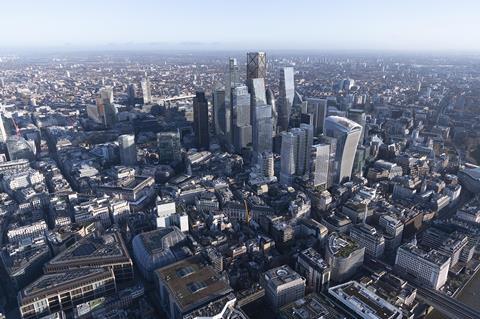Authority set to host “hub” for high-risk building assistance requests from new national regulator

The City of London could play a co-ordinating role for the whole of the capital under the new building-safety regime that is due to come into force later this year.
In response to 2017’s Grenfell Tower disaster, the new Building Safety Regulator will become the building-control authority responsible for all new applications for so-called “high risk” buildings. They are defined as buildings of seven or more storeys, or structures that are 18m tall or higher, and which have two or more homes. Hospitals and care homes also fall into the ”high risk” category when they are tall enough.
Under the new system, set out in the Building Safety Act 2022, applications for building-regulation consent will go directly to the BSR, rather than local authorities or private building-control approvers.
However the regulator will have the right to request – or instruct – local authorities and fire and rescue authorities to assist them with their duties as a building-control authority.
Outside of London, the not-for-profit organisation Local Authority Building Control has agreed to act as a single point of contact for requests for assistance from the Building Safety Regulator.
In the capital, the London District Surveyor’s Association has proposed that a single building-control team should act as the point of contact for all 33 such teams – and has nominated the City of London District Surveyors Office.
District surveyor for the City of London Gordon Roy supports the plan and is calling on members of the authority’s planning and transportation committee to back the proposals, which would see the creation of the “London Hub”.
In a report to the committee, Roy said that one of the functions of the hub would be to identify where council-based expertise is available to help the regulator check plans and carry out site inspections to ensure compliance.
“All initial requests for assistance will go from the London Hub to the borough where the building is located, but if they are unable to assist, then the hub will look for an alternative borough for the BSR,” he said.
Roy said directing requests from the regulator to available council-based teams would build in-house skills, help to retain staff, and boost income for local authorities in the capital.
He added that basing the hub in the City of London would ensure that its building-control team was “at the forefront of new working practices within the building control industry” when the new regulatory regime comes into effect later this year.
Roy said all costs for the London Hub would be met by other building-control teams on a cost-recovery basis. But he said the hub would allow the City to identify the potential for new services at an early stage.
The City’s planning and transportation committee meets at 10.30am on Tuesday next week to consider the proposal.
















3 Readers' comments